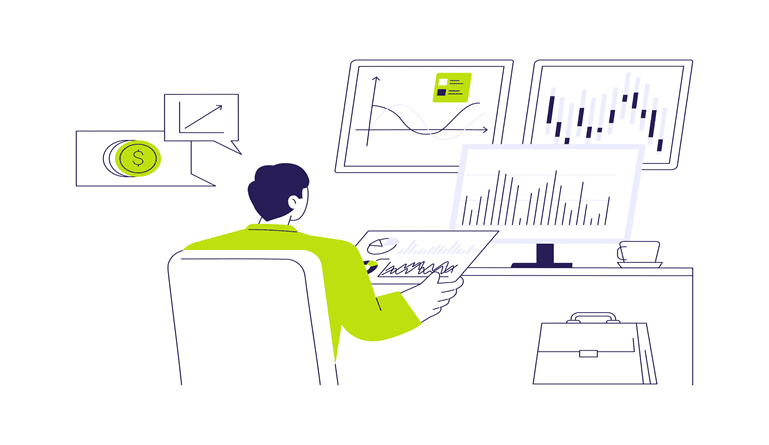Blockchain technology, began with Bitcoin in 2008, followed by many other cryptocurrencies and then expanded its usefulness even further with open source hyperledger applications starting in 2015. This trend has the potential to disrupt the finance sector globally. Progress is continually being made with advancements in blockchain technology that goes well beyond investors’ speculation in cryptocurrencies.
There are plenty of blockchain challenges and opportunities. Blockchain applications now exist that can be used for the clearing exchanges of many financial assets and to complete financial transactions. For example, HSBC recently announced it completed a trade finance transaction using blockchain technology. The transaction completed in minutes. Compare this to a similar transaction using a paper-based system taking up to a week to process. This is the future of international trade finance.
The potentials for disruptive change in the finance sector through the applications of blockchain and Hyperledger include:
- Enterprise transformation by changing paper-based systems to digital processes.
- Creation of new peer-to-peer finance markets without the need for intermediaries.
- Improved risk management through the verified and widespread use of global digital identity.
Despite all the opportunities, there are significant blockchain challenges in the finance sector for further advancements and widespread acceptance of blockchain technology.
Blockchain Challenges in Financial Markets
Here are some important blockchain challenges:
1. Performance Issues
Transaction speeds are incredibly slow using Bitcoins, which can only process three to seven transactions per second. The Ethereum cryptocurrency blockchain was invented to improve transaction speed; however, it can only handle up to 15 transactions per second. Compare this to legacy payment-processing systems that operate at the rate of tens of thousands of transactions per second.
2. Crime and Hacking in Cryptocurrencies
Bitcoins are heavily associated with criminal activities. Also, cryptocurrency exchanges lost about $1 billion in value due to criminal theft through hacking. Hyperledger applications are distancing themselves from cryptocurrencies for these and other reasons. Nevertheless, there remain significant concerns about security issues and distaste for the association with crime.
Public encrypted blockchains, which are decentralized and shared on a peer-to-peer network, are impervious to hacking; however, private blockchains with centralized management, such as a cryptocurrency exchange, are very vulnerable to hacking.
3. Standards
Interoperability between blockchain systems is a problem. Legacy systems developed over decades by increasing interoperability. Blockchain technology also needs to follow this general pattern of interoperability in order to increase acceptance.
4. Transaction Costs
Some blockchain technology has a serious problem with the cost of the electricity and the computer servers needed to process transactions. Bitcoins are created by being “mined.” Mining Bitcoins is a complex computational problem that now, in many locales, uses more electricity to create a Bitcoin than a Bitcoin is worth.
The slowness of Bitcoin transaction processing also increases the cost to an average of about $4 per transaction. Ethereum transaction cost is about 15 cents per transaction. Nevertheless, this cost per transaction needs to go down by a factor of more than one thousand times to be viable for larger systems.
5. Price Volatility in Cryptocurrency
The wild swings in the values of cryptocurrencies, which caused them to suddenly lose up to 80% of their value during 2018, makes them less desirable for long-term storage of value. Any system that relies on payment through cryptocurrencies is diminished by this excessive volatility in value.
6. Regulations
Governments around the world are playing a game of catch up by regulating this technology in some cases, like China and South Korea, they are outlawing cryptocurrencies and banning exchanges. Regulation of this technology is increasing and becoming the biggest blockchain challenges. This will hamper the deployment of new global systems based on blockchain/Hyperledger technology.
7. Acceptance
For blockchain technology to gain wider acceptance, this requires cooperation between industry sectors and banking. One of the biggest challenges it that this threatens the monopolies that exist such as in currency exchange markets dominated by central banks.
8. Conversion from Legacy Systems
There is a general resistance to change and a potentially high cost to convert legacy systems to use blockchain technology instead. This cost may be more than simply a financial investment. Even though Hyperledger blockchain technology has been in development since 2015, it is just now being used for the first transactions in some sectors, such as in international trade finance.
The benefits of the implementation of blockchain technology are easy to demonstrate; however, the potential disruptions in certain industry sectors are significant. For example, using blockchain technology to replace the paper-based system used to process title closings in real estate is a strong value proposition. However, if blockchain technology is widely deployed in this sector, then many thousands of people currently working in processing these paper-based transactions will lose their jobs.
9. Consumer Confidence
Consumer confidence, and the lack thereof, in systems based on blockchain technology is a significant factor that will drive the deployment of these technologies. Many business-to-business applications are being deployed first before blockchain technology goes fully mainstream for all kinds of consumer transactions.
An example of this process to slowly build consumer confidence has been the transition to a cashless economy over the past decades. Eventually, paper currency will be completely phased out; however, this has not happened quickly. The blockchain technology used for consumer transactions will likely evolve in a similar way over time.
Even though there are major blockchain challenges in the wide deployment of blockchain/Hyperledger technology, these challenges are not, by any means, insurmountable. In fact, inroads are constantly being made with the help of a huge number of programmers working on the open source code applications. Due to all the work being done, blockchain applications are coming out faster than ever before.
There is certainly an unstoppable progression in the direction of using blockchain and Hyperledger solutions to replace legacy paper-based systems. The biggest opportunities exist for paper-based systems in the extraordinary reductions in transaction-processing speed (from days to minutes) and the benefits of having much lower transaction-processing cost.
If your organization process lots of transactions using mountains of paperwork, it is time to investigate the blockchain/Hyperledger solutions to make these processes much more efficient.




